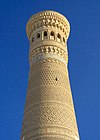Related Research Articles

Qarshi is a city in southern Uzbekistan. It is the capital of Qashqadaryo Region. Administratively, Qarshi is a district-level city, that includes the urban-type settlement Qashqadaryo. It has a population of 278,300. It is about 520 km south-southwest of Tashkent, and about 335 km north of Uzbekistan's border with Afghanistan. It is located at latitude 38° 51' 48N; longitude 65° 47' 52E at an altitude of 374 meters. The city is important in natural gas production, but Qarshi is also famous for its production of woven flat carpets.

Tashkent or Toshkent is the capital and largest city of Uzbekistan. It is the most populous city in Central Asia, with a population of 3 million. It is located in northeastern Uzbekistan, near the border with Kazakhstan.

Bukhara is the seventh-largest city in Uzbekistan by population, with 280,187 residents as of 1 January 2020. It is the capital of Bukhara Region. The mother tongue of the majority of people of Bukhara is the Tajik dialect of the Persian language, although Uzbek is spoken as a second language by most residents.

Khiva is a district-level city of approximately 93,000 people in Khorazm Region, Uzbekistan. According to archaeological data, the city was established around 2,500 years ago. In 1997, Khiva celebrated its 2500th anniversary. It is the former capital of Khwarezmia, the Khanate of Khiva, and the Khorezm People's Soviet Republic. Itchan Kala in Khiva was the first site in Uzbekistan to be inscribed on the World Heritage List (1991). The astronomer, historian and polymath, Al-Biruni was born in either Khiva or the nearby city of Kath.
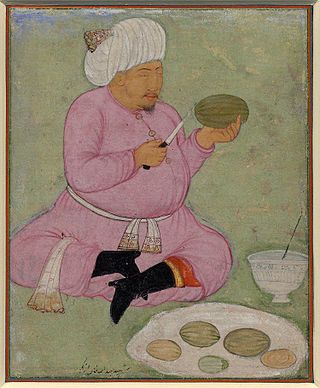
Abdullah Khan (1533/4–1598), known as "The Old Khan", was an Uzbek ruler of the Khanate of Bukhara (1500–1785). He was the last uncontested Shaybanid Khan of Bukhara from 1583 until his death.
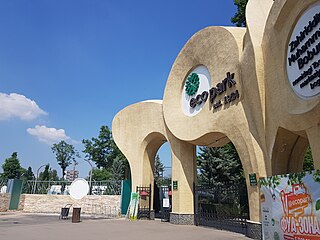
Tourist activities in Uzbekistan range from outdoor activities, such as rock-climbing, to exploration of its archeological and religious history. The Statistical Internet Survey conducted between May 7 and August 27, 2008, found that the majority of those surveyed (39%) visit Uzbekistan due to interest in its architectural and historical sites. The next-largest group (24%) visited Uzbekistan to observe its culture, way of life, and customs.

The Shibanids or Shaybanids or more accurately the Abu'l-Khayrid-Shibanids, were a dynasty of Turko-Mongol origin, who ruled over most of modern-day Kazakhstan, much of Uzbekistan, and parts of southern Russia in the 15th century. They were the patrilineal descendants of Shiban, the fifth son of Jochi and grandson of Genghis Khan. Until the mid-14th century, they acknowledged the authority of the descendants of Shiban's brothers Batu Khan and Orda Khan, such as Öz Beg Khan. The Shaybanids originally led the gray horde southeast of the Urals, and converted to Islam in 1282. At its height, the Khanate included parts of modern-day Afghanistan and other parts of Central Asia.

The Ark of Bukhara is a massive fortress located in the city of Bukhara, Uzbekistan, that was initially built and occupied around the 5th century AD. In addition to being a military structure, the Ark encompassed what was essentially a town that, during much of the fortress's history, was inhabited by the various royal courts that held sway over the region surrounding Bukhara. The Ark was used as a fortress until it fell to Russia in 1920. Currently, the Ark is a tourist attraction and houses museums covering its history. The museums and other restored areas include an archaeological museum, the throne room, the reception and coronation court, a local history museum, and the court mosque.

Architecture of Central Asia refers to the architectural styles of the numerous societies that have occupied Central Asia throughout history. These styles include a regional tradition of Islamic and Iranian architecture, including Timurid architecture of the 14th and 15th centuries, as well as 20th-century Soviet Modernism. Central Asia is an area that encompasses land from the Xinjiang Province of China in the East to the Caspian Sea in the West. The region is made up of the countries of Kazakhstan, Uzbekistan, Tajikistan, Kyrgyzstan, and Turkmenistan. The influence of Timurid architecture can be recognised in numerous sites in Kazakhstan and Uzbekistan, whilst the influence of Persian architecture is seen frequently in Uzbekistan and in some examples in Turkmenistan. Examples of Soviet architecture can be found in Uzbekistan, Kazakhstan, Tajikistan and Kyrgyzstan.
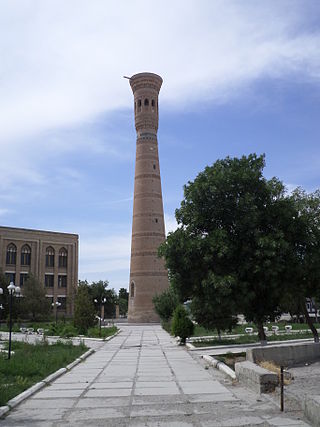
Vobkent is a city in the Bukhara Region of Uzbekistan and the capital of Vobkent District. It is famous for a minaret constructed in 1196–1198, under the reign of Ala ad-Din Tekish.

Rabati Malik, also called Ribat-i Malik, is a caravanserai ruin located on the M37 road from Samarkand to Bukhara about a kilometer west of the edge of Malik, Navoiy Province, Uzbekistan. It was constructed along the Silk Road according to the orders of Karakhanid Shams al-Mulk Nasr, son of Tamgachkhan Ibragim, who ruled in Samarkand from 1068 until 1080.

The State Museum of History of Uzbekistan, previously known as the National Museum of Turkestan, was founded in 1876. It is located in Tashkent.

"Asrlar Sadosi" is a festival of traditional Uzbek culture which attracts tens of thousands of local and overseas tourists every year and presents all the diversity of the national traditions and customs, handicrafts and cuisine, unique oral and non-material heritage. Asrlar Sadosi has been annually organised by The Fund Forum of Culture and Arts of Uzbekistan since 2008, in association with UNESCO since 2009.
Chiroqchi is a city in Qashqadaryo Region, Uzbekistan. It is the capital of Chiroqchi District. Its population is 23,800 (2016).
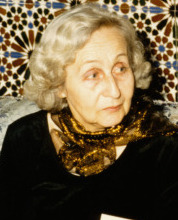
Galina Anatolyevna Pugachenkova was a Soviet archaeologist and art historian, regarded as a founder of Uzbek archaeology and central to the progression of archaeology and art history under Soviet regimes. Her work has contributed greatly to the register of surviving buildings in Central Asia and in many cases was the first register of traditional surviving buildings. Pugachenkova directed a branch of the archaeological expedition of southern Turkmenistan from 1946 to 1961, and of the Uzbek historical-artistic expedition from 1959 to 1984.
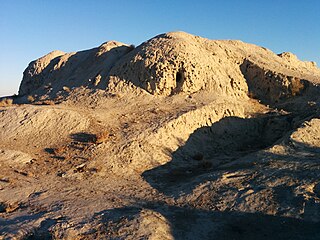
Varakhsha, also Varasha or Varahsha, was an ancient city in the Bukhara oasis in Sogdia, founded in the 1st century BCE. It is located 39 kilometers to the northwest of Bukhara. Varakhsha was the capital of the Sogdian dynasty of the kings of Bukhara, the Bukhar Khudahs. It ultimately never recovered from the Muslim conquest of Transoxiana.
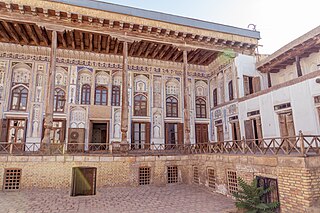
Fayzulla Xoʻjayev house museum or Fayzulla Xoʻjayev memorial museum is a memorial building named after the statesman Fayzulla Xoʻjayev located in Bukhara, Uzbekistan. The house museum is established inside the apartment. This museum is 3 hectare of land. It consists of two dividual inner courtyards for men and women. After Khojayev's death, this monument fell into neglect. In 2023, the house museum was reconstructed and opened for local and foreign tourists.

The Bukhara Mosque is a historical monument in Bukhara. It is one of the mosques built for praying during Eid festivals. It was built behind the gate of the prayer hall in the southern part of Bukhara by Shams al-Mulk (1068-1080), who ruled Bukhara under the Kara-Khanid dynasty, in the 11th century. It was built in the 11th-16th centuries.
References
- ↑ Niyazova, M I: "Coin in Jewellery from Bukhara" in Proceedings of the 13th Numismatic Congress, Madrid, 2003
